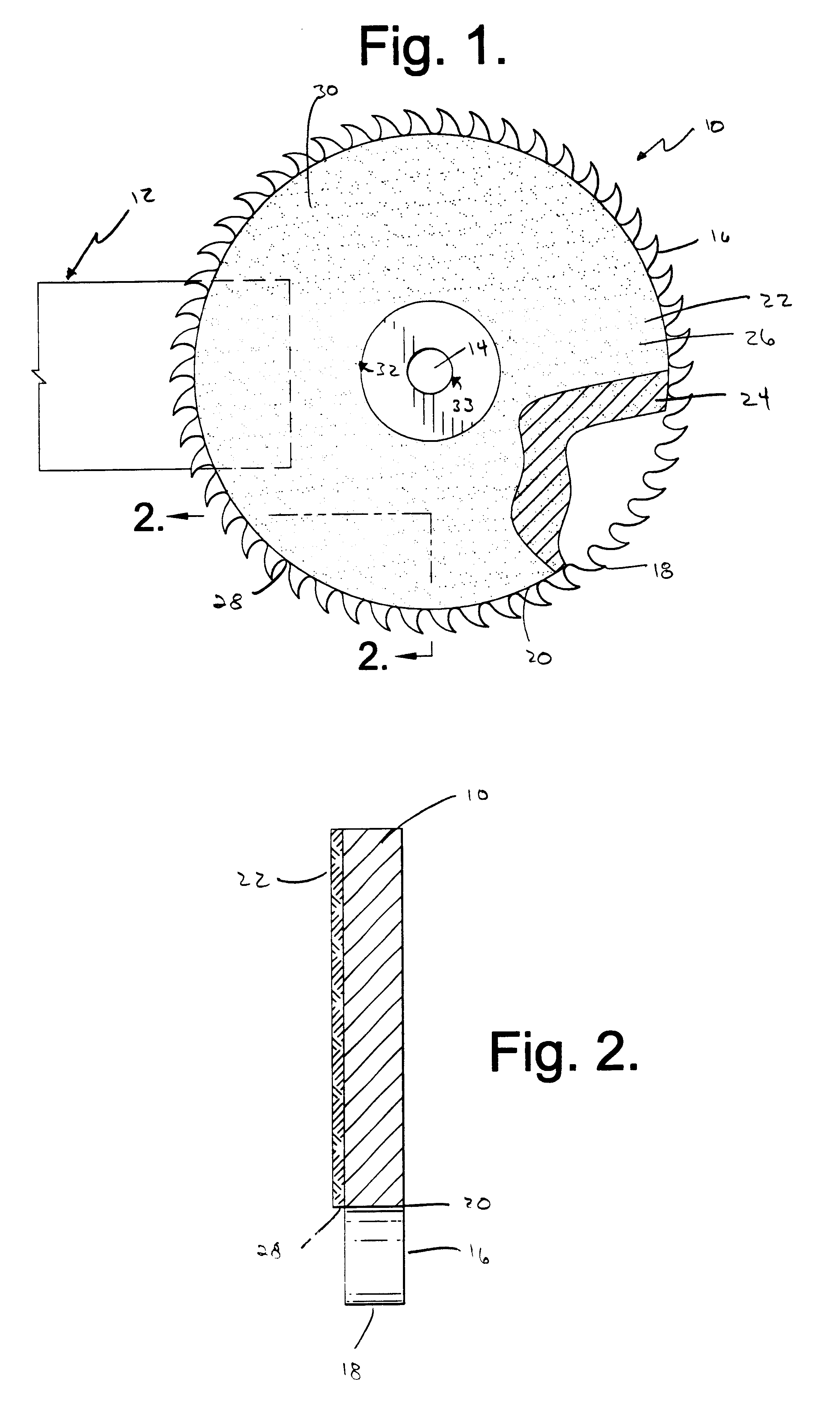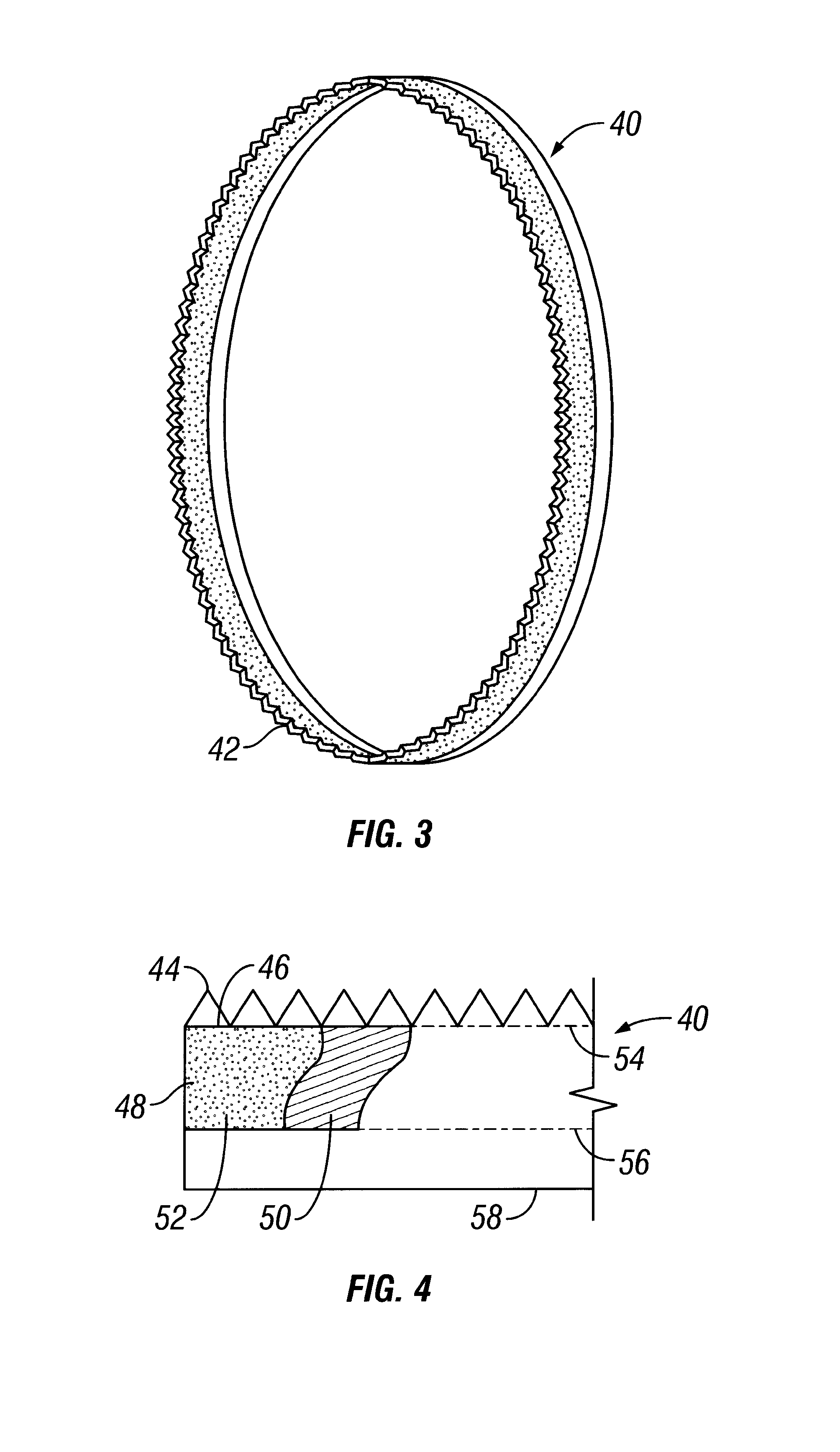Saw blade with abrasive surface
a technology of abrasive surface and saw blade, which is applied in the field of saw blades, can solve the problems of reducing the aesthetic quality of the finished product, the cost of sanding the cut, and the additional cost of completing the finished product, so as to reduce the occurrence of saw blade kickback, and reduce the cost of cutting
- Summary
- Abstract
- Description
- Claims
- Application Information
AI Technical Summary
Benefits of technology
Problems solved by technology
Method used
Image
Examples
Embodiment Construction
[0025]Referring now to the FIGS. 1, and 2, a circular saw blade 10 for cutting and finishing the surface of a work piece 12 of the present invention is shown generally at 10. The circular saw blade 10 is generally comprised of a suitable high strength alloy or the like. The circular blade 10 has a central arbor hole 14 therein for mounting the saw blade on an arbor shaft of a saw. At the periphery of the blade are teeth 16 for cutting the work surface. The teeth have a tip 18 at the most extreme position and are joined to the saw blade at the base 20. The teeth 16 constitute the primary cutting mechanism for the saw blade 10.
[0026]Further as shown in FIGS. 1 and 2, the cutting and finishing saw blade 10 of the present invention includes an abrasive material 22 on both sides of the saw blade. However, it is to be understood that such an abrasive may be provided on just one side of the saw blade 10. The preferred embodiment would utilize abrasive material 22 on both sides of the saw b...
PUM
| Property | Measurement | Unit |
|---|---|---|
| abrasive | aaaaa | aaaaa |
| force | aaaaa | aaaaa |
| speed | aaaaa | aaaaa |
Abstract
Description
Claims
Application Information
 Login to View More
Login to View More - R&D
- Intellectual Property
- Life Sciences
- Materials
- Tech Scout
- Unparalleled Data Quality
- Higher Quality Content
- 60% Fewer Hallucinations
Browse by: Latest US Patents, China's latest patents, Technical Efficacy Thesaurus, Application Domain, Technology Topic, Popular Technical Reports.
© 2025 PatSnap. All rights reserved.Legal|Privacy policy|Modern Slavery Act Transparency Statement|Sitemap|About US| Contact US: help@patsnap.com



